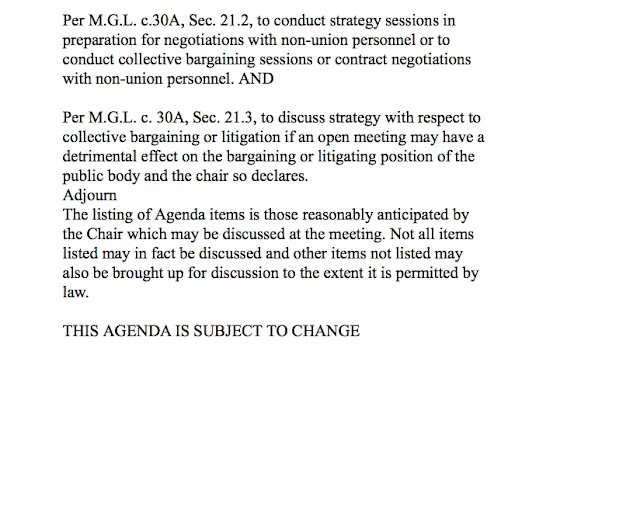Economic Recovery? 13 Of The Biggest Retailers In America Are Closing Down Stores
Submitted by Tyler Durden on 02/26/2016 12:29 -0500
Submitted by Michael Snyder via The Economic Collapse blog,
Barack Obama recently stated that anyone that is claiming that America’s economy is in decline is “
peddling fiction“. Well,
if the economy is in such great shape, why are major retailers shutting down hundreds of stores all over the country?
Last month, I wrote about the “
retail apocalypse”
that is sweeping the nation, but since then it has gotten even worse.
Closing stores has become the “hot new trend” in the retail world, and
“space available” signs are going up in mall windows all over the United
States.
Barack Obama can continue huffing and puffing about
how well the middle class is doing all he wants, but the truth is that
the cold, hard numbers that retailers are reporting tell an entirely
different story.
Earlier today, Sears Chairman Eddie Lampert released a letter to
shareholders that was filled with all kinds of bad news. In this
letter, he blamed the horrible results that Sears has been experiencing
lately on
“tectonic shifts” in consumer spending…
In
a letter to shareholders on Thursday, Lampert said the impact of
“tectonic shifts” in consumer spending has spread more broadly in the
last year to retailers “that had previously proven to be relatively
immune to such shifts.”
“Walmart, Nordstrom, Macy’s, Staples, Whole Foods and many others
have felt the impact of disruptive changes from online competition and
new business models,” Lampert wrote.
And it is very true – Sears is doing horribly, but they are far from alone. The following are 13 major retailers that are closing down stores…
#1 Sears lost
580 million dollars in the fourth quarter of 2015 alone, and they are scheduled to close at least 50 more “
unprofitable stores” by the end of this year.
#2 It is being reported that Sports Authority will file for bankruptcy
in March.
Some news reports have indicated that around 200 stores may close, but
at this point it is not known how many of their 450 stores will be able
to stay open.
#3 For decades, Kohl’s has been growing aggressively, but now it plans to shutter
18 stores in 2016.
#4 Target has just finished closing
13 stores in the United States.
#5 Best Buy closed
30 stores last year, and it says that more store closings are likely in the months to come.
#6 Office Depot plans to close a total of
400 stores by the end of 2016.
The next seven examples come from
one of my previous articles…
#7 Wal-Mart is closing
269 stores, including
154 inside the United States.
#8 K-Mart is closing down
more than two dozen stores over the next several months.
#9 J.C. Penney will be permanently shutting down
47 more stores after closing a total of
40 stores in 2015.
#10 Macy’s has decided that it needs to shutter
36 stores and lay off
approximately 2,500 employees.
#11 The Gap is in the process of closing
175 stores in North America.
#12 Aeropostale is in the process of closing
84 stores all across America.
#13 Finish Line has announced that
150 stores will be shutting down over the next few years.
These store closings can be particularly cruel for small towns. Just
consider the impact that Wal-Mart has had on the little town of
Oriental, North Carolina…
The
Town’n Country grocery in Oriental, North Carolina, a local fixture for
44 years, closed its doors in October after a Wal-Mart store opened for
business. Now, three months later — and less than two years after
Wal-Mart arrived — the retail giant is pulling up stakes, leaving the community with no grocery store and no pharmacy.
Though mom-and-pop stores have steadily disappeared across the
American landscape over the past three decades as the mega chain
methodically expanded, there was at least always a Wal-Mart left behind
to replace them. Now the Wal-Marts are disappearing, too.
Of course there are many factors involved in this ongoing retail apocalypse. Competition from online retailers is becoming more intense, and consumer spending patterns are rapidly changing.
But in the end, the truth is that you can’t get blood out of a rock. The middle class in America
is shrinking, and there just isn’t as much discretionary spending going on as there used to be.
And now that we have entered
a new economic downturn, many retailers are finding that there are
some local communities that can no longer support their stores. The following comes
from CNBC…
Though
the shift to online shopping is no doubt playing a role in lighter foot
traffic at malls, there’s more to their changing economics than the
rise of Amazon.
Changing demographics in a town are another reason a shopping center
could struggle or fail — for example, if massive layoffs in a particular
industry cause people to move away to find employment.
“A lot of people want to try and tie it to the Internet or ‘that’s
not cool,’ or teens don’t like it,” Jesse Tron, a spokesman for industry
trade group International Council of Shopping Centers, told CNBC last year. “It’s hard to support large-format retail in those suburban areas when people are trying to just pay their mortgage.”









